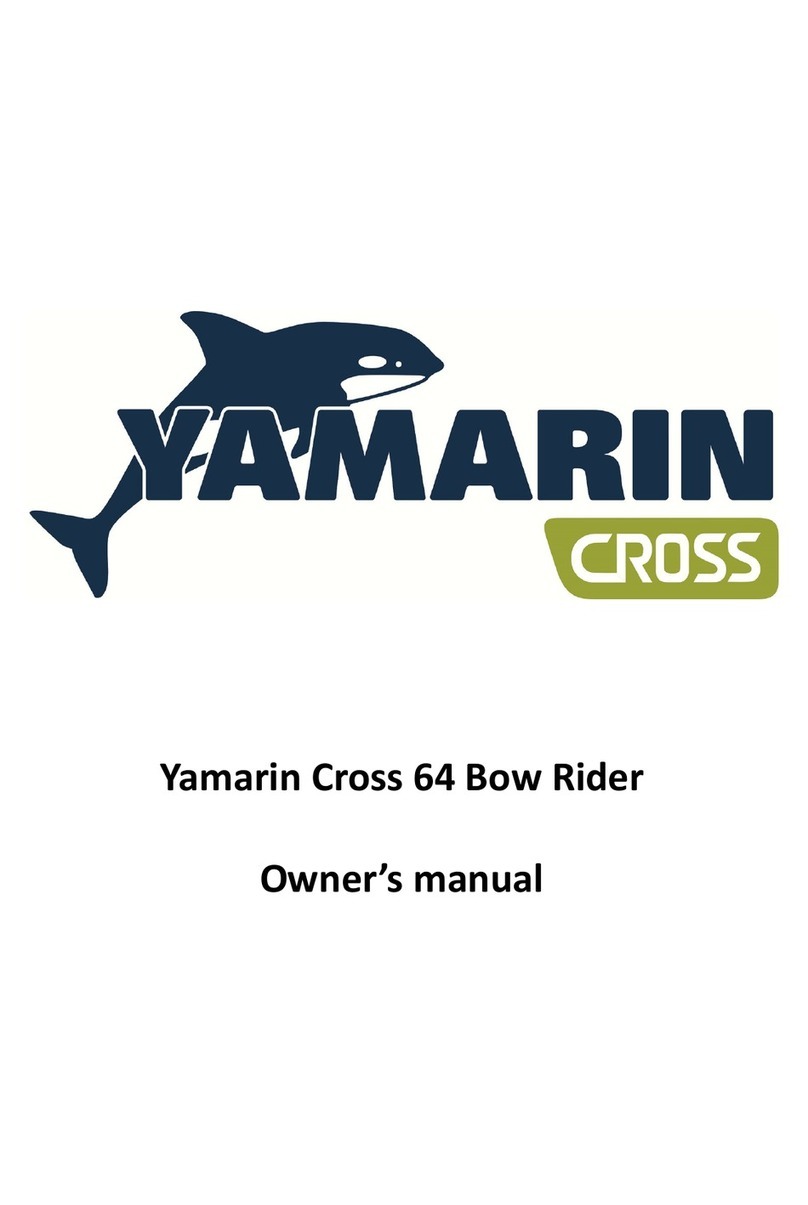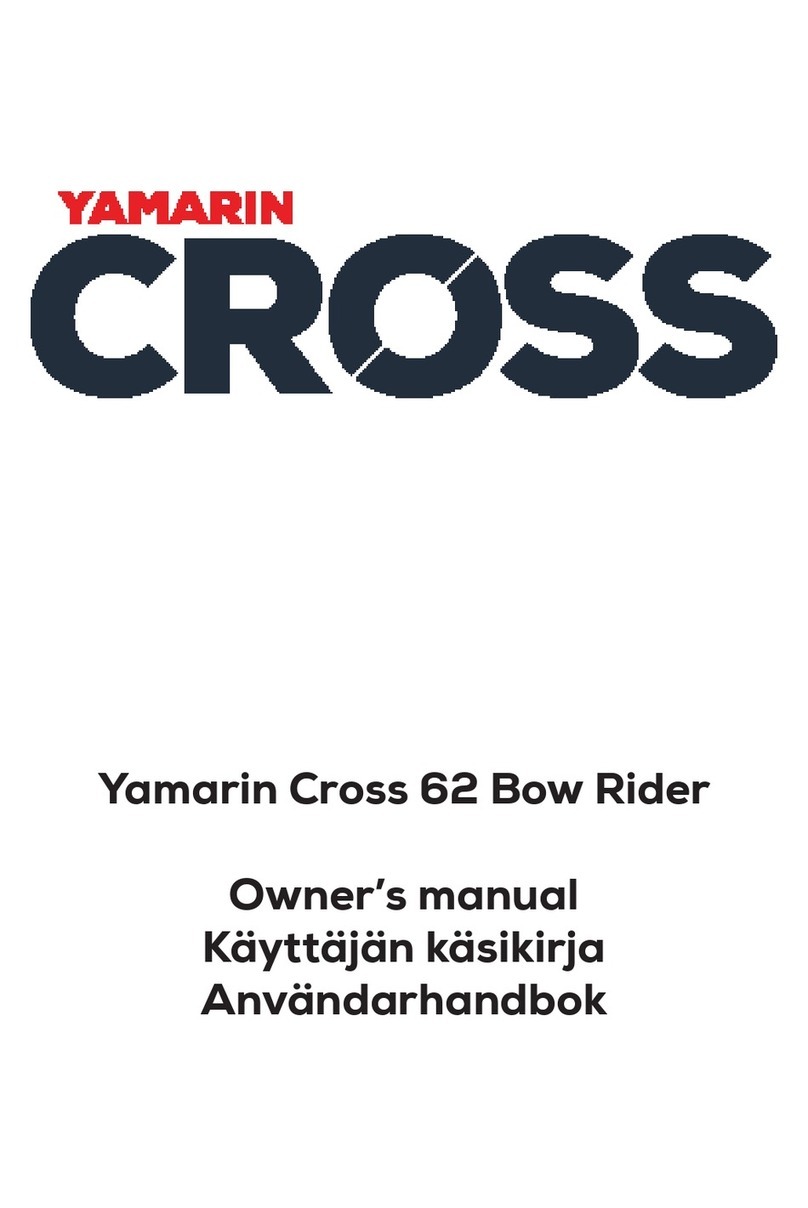Foreword
Congratulations for choosing a Yamarin Cross boat!
This manual will familiarise you with the features of your new vessel and help with its care
and maintenance. It has been written to help you learn to handle your craft safely and avoid
any problems. Make sure that you have received manuals for all equipment fitted on your
boat. Supplement this manual with the specifications and manuals of equipment you
purchase later for your boat. Space has been left for your own notes at the end of the
manual. Please read this manual carefully and familiarise yourself with the craft before using
it.
If this is your first craft, or you are changing to a type of craft you are not familiar with,
please ensure that you obtain sufficient handling and operating experience before assuming
command of the craft. This is highly important for your own comfort and safety. Your dealer
or national sailing association or yacht club will be happy to advise you of local boating
schools or competent instructors.
This owner’s manual is not a detailed maintenance or troubleshooting guide. In case of
difficulty please contact the dealer. Always use qualified and competent people for the
maintenance, repair and modification of the boat. Modifications that may affect the safety
characteristics of the craft must be assessed, executed and documented by competent
people. The manufacturer is not responsible for modifications they have not approved.
Always keep your boat in a good condition and be aware that the boat requires maintenance
and servicing. Any craft, no matter how strong it may be, can be severely damaged if not
used properly. Always adjust the speed and direction of the craft to prevailing weather
conditions.
We wish you enjoyable and relaxing times on board with your Yamarin Cross boat!
Inha Works Ltd.
Hahdenniementie 2
21120 Raisio
Finland
www.yamarin.com
Please keep this manual in a secure place, and hand it over to the new owner if you sell
the craft.






























